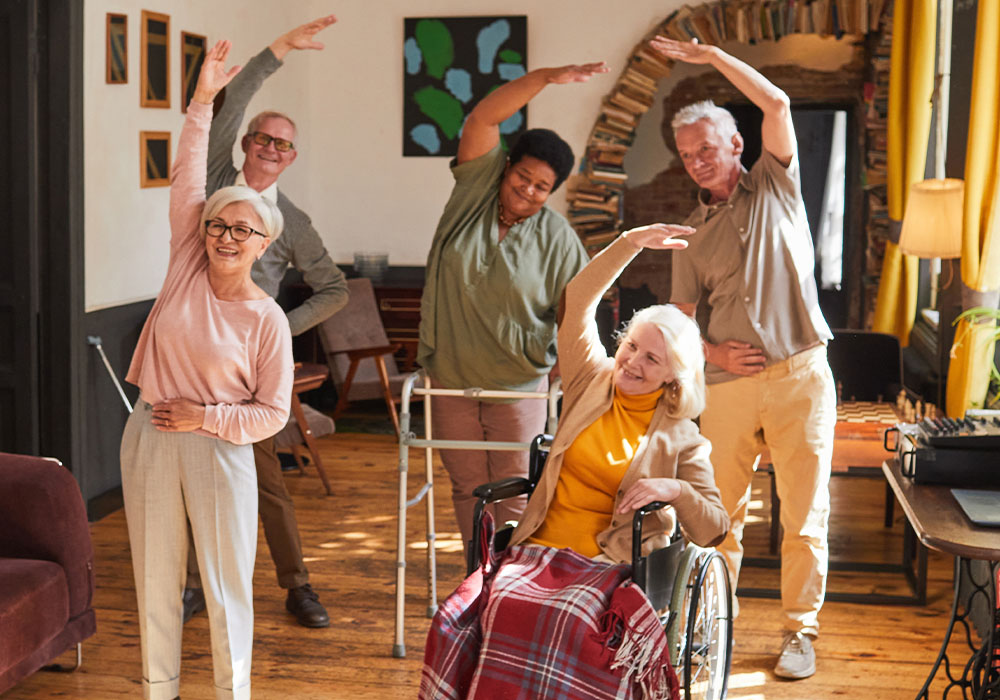As winter’s chill gives way to spring’s gentle warmth, May presents the perfect opportunity for seniors to embrace the outdoors and rejuvenate after the more sedentary winter months. Rebuilding strength and mobility is essential for maintaining independence and overall well-being. The tips below are carefully designed to improve balance, flexibility, and cardiovascular health while also nurturing the emotional and cognitive benefits of connecting with nature.
The Science Behind Senior Mobility and Nature
Research consistently shows that outdoor engagement significantly benefits older adults. Regular nature exposure can reduce stress hormones by up to 15%, improve cognitive function, and enhance mood. For seniors specifically, mindful outdoor activity helps maintain independence and improves quality of life. Senior mobility challenges often intensify during winter months, making spring the ideal time to rebuild strength, balance, and confidence gradually.
Graduated Walking Program: Building Endurance Step by Step
Walking remains one of the most accessible and effective exercises for seniors of all ability levels. Consider this progressive approach:
- Week 1-2: Begin with 5 to 10-minute walks on level, stable surfaces like paved park paths
- Week 3-4: Gradually increase to 15 to 20 minutes, incorporating gentle inclines
- Week 5-6: Aim for 20 to 30 minutes, adding natural terrain when appropriate
Safety Tips
Always wear supportive footwear with non-slip soles, carry a cell phone, and consider using walking poles for additional stability. Morning walks often provide optimal temperatures and energy levels for most seniors.
Modifications
For those using mobility aids, focus on distance rather than time. Wheelchair users can build endurance through self-propelling on appropriate surfaces or participating with assistance.
Accessible Gardening: Nurturing Life and Improving Flexibility
Gardening offers a purposeful way to improve senior mobility through natural, functional movements. Consider these approaches:
- Raised Bed Gardens: Elevated at 30 to 36 inches, these eliminate bending while allowing meaningful engagement
- Container Gardening: Lightweight pots on wheeled platforms provide flexibility and adjustment
- Vertical Gardens: Wall-mounted systems reduce reach requirements while creating beautiful living spaces
Planting, watering, and tending plants naturally encourages stretching, grip strength, and fine motor coordination—all crucial components of maintaining independence.
Nature-Based Balance Exercises: Preventing Falls Through Practice
Balance challenges represent a significant concern for aging adults. These outdoor balance activities help address this critical aspect of senior mobility:
- Tree Pose with Support: Standing near a sturdy bench or railing, practice standing on one foot briefly
- Heel-to-Toe Walking: Along a straight garden path, place your heel directly in front of your toe while walking
- Seated Weight Shifts: Practice controlled side-to-side and forward-backward weight transfers on a stable outdoor bench
Performing these exercises for just 10 minutes three times weekly has been shown to reduce fall risk significantly.
Social Nature Engagement: Strengthening Body and Community
Group activities enhance motivation and provide vital social connections. Consider joining walking clubs, where scheduled group walks combine socialization with exercise in a supportive environment. Many communities also offer senior-specific community garden programs that foster both horticultural skills and meaningful relationships. Our Caregivers can offer such a community for Clients as well, joining them on walks and nature-based activities as the seasons allow.
Seasonal Transition Safety Considerations
Spring’s changeable weather requires specific precautions for seniors venturing outdoors. Monitor weather forecasts carefully and avoid outdoor activities during storms or extreme temperatures that might pose risks. Layer clothing appropriately for unpredictable temperature changes, which allows for adjustment as the day warms or cools.
Remember to stay hydrated, even in moderate temperatures, as dehydration can happen before thirst is noticed. Be aware of seasonal allergies and how they might affect breathing or medication needs, consulting healthcare providers if symptoms interfere with outdoor enjoyment. Apply sunscreen even on cloudy days, as UV rays can penetrate cloud cover and cause skin damage.
Spring Is More Than a Season; It’s a Mindset
By prioritizing outdoor engagement this spring, Caregivers and families provide more than just physical exercise—they offer meaningful experiences that honor the whole person. Enhanced senior mobility represents not just physical capability but increased independence, confidence, and quality of life for aging loved ones.
For more personalized guidance on improving senior mobility and to discuss the in-home care needs that best suit your situation, contact one of our Oregon- or Indiana-based branches.

